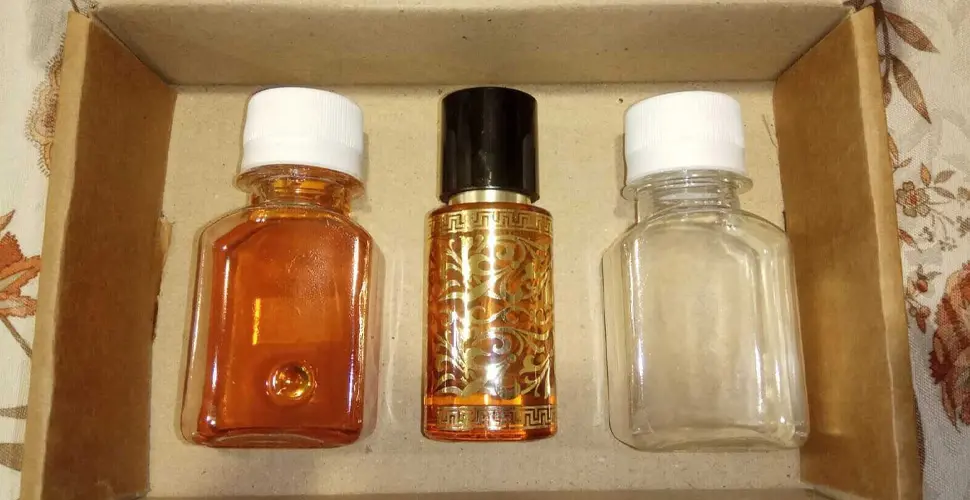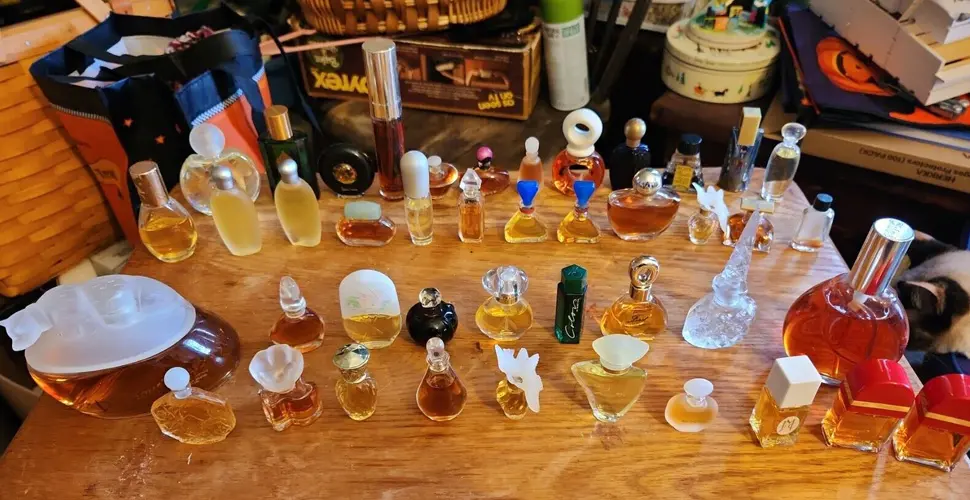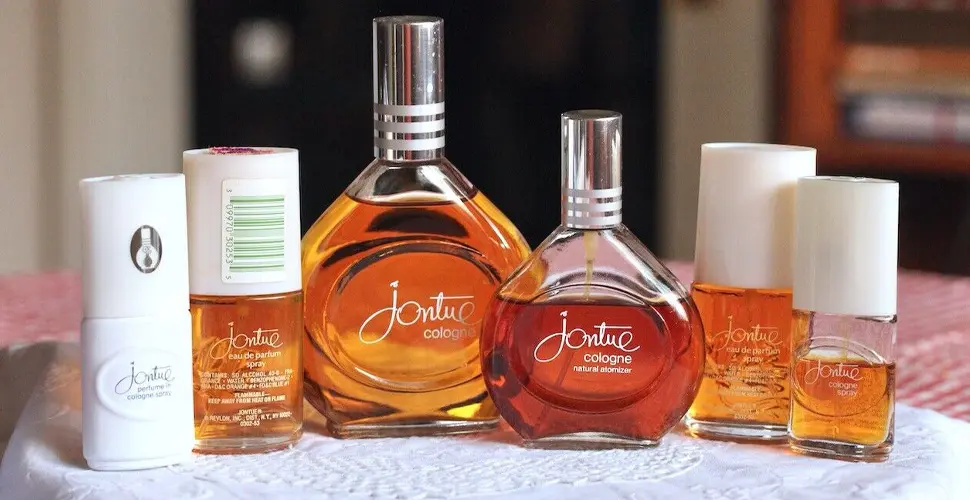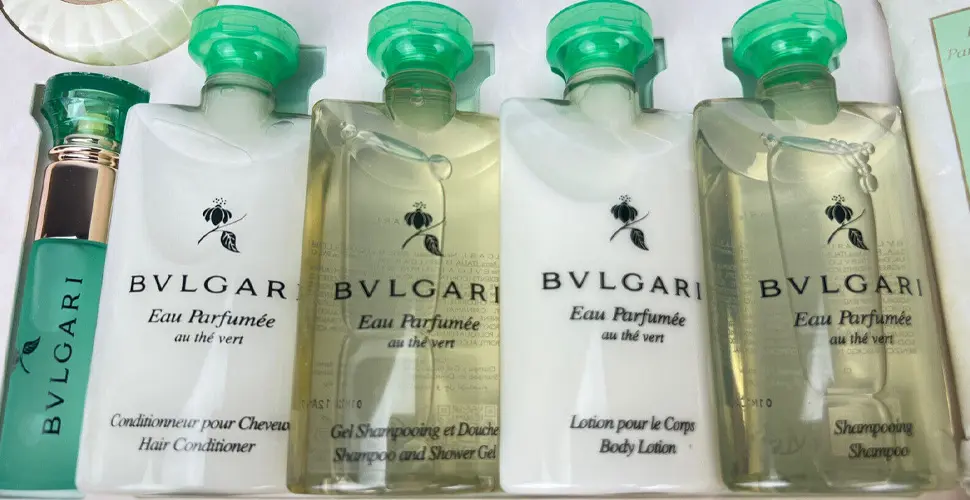This is the Fascinating History of Essential Oils in Perfume
Deana Stallings
- 04 Jan 2023

This is the Fascinating History of Essential Oils in Perfume
Introduction
Fragrance is a sultry necessity like air and water, it must be around us to provide comfort and an exquisite aroma to life - Unknown
Are you intrigued by the history of essential oils in perfumes? Are you curious to discover how this age-old tradition has been part of our lives for centuries? Then you are in store for a treat as we explore the fascinating history of essential oils in perfumes!
“Essential oils have been used by different cultures around the world for thousands of years for both physical and spiritual purposes.”
The oldest known use of essential oils was dating back to the ancient Egyptians; they used many different essential oils to create exquisite scents and perfumes to cover the foul smell of decaying bodies during the mummification process. Essential oils have been used in perfumery since then - some of the best preserved oils have been found in the tomb of Tutankhamun.
From then on, essential oils became popular across different cultures, offering an array of sweet scents and therapeutic effects. Greeks and Romans use them to create luxurious perfumes; medieval Europe used them as an antiseptic, while the 16th and 17th centuries saw the rise of perfumeries as essential oils became popular across Europe.
But how do essential oils work in perfumes? Essential oils are the fundamental ingredients of all perfumes, providing both a scented base and a therapeutic effect. Because of their fixative nature, essential oils are used to lock in other aromas and make them last longer - without them, scents would quickly dissipate and fade away.
Essential oils in perfumery come from a range of sources: plants, trees, flowers, fruit, herbs and spices. Each type of essential oil provides its own unique scent and often a special energy or other therapeutic effect for its user.
So, as you can see, the fascinating history of essential oils in perfumes is filled with a myriad of interesting facts and stories. Hopefully, this quick overview has piqued your curiosity and desire to learn more about the wonders of essential oils in perfumery!
Q: How have essential oils been used throughout history?
A: Essential oils have been used by different cultures around the world for thousands of years, both for physical and spiritual purposes. In terms of perfumery, essential oils have been used in this craft since ancient Egyptian times, to create exquisite scents and fixative aromas, and have continued to be popular across Europe, until reaching mainstream success in the 16th and 17th centuries.
History of Essential Oils
Essential oils have been around since ancient times, and have long been used in perfumery. From the earthy, spicy notes of patchouli to the floral, subtle tones of lavender, essential oils help determine the scent of any natural perfume.
Essential oils are oils that are found in the bark, flowers, stems, leaves, and other parts of plants. They’re extracted through steam distillation or mechanical pressing and are highly concentrated, so just a little bit goes a long way.
In perfumery, essential oils provide a different layer of complexity and intensity to a scent, giving it a deep and lasting impression. Generally, two different types of essential oils are used in natural perfumes: top notes and base notes.
Top notes (also referred to as head notes) are usually the lightest and most volatile essential oils; these often possess a light, sharp smell and dissipate quickly. Common top notes in perfumery are citrus and minty essential oils, such as bergamot and peppermint.
Base notes (or heart notes) generally have the deepest, sweetest, and strongest aromas. They often have a heavy, burning smell and can be hard to recognize by themselves. Examples of popular base notes include lavender, sandalwood, and patchouli.
When used in perfumery, essential oils are carefully blended together in a formula to achieve the desired scent. Creating a unique scent can be a complicated, time-consuming process, but when done right, the outcome can be something truly precious and memorable!
Essential oils have been used in perfumery for centuries, and they’re still a major part of natural and artisan fragrances today! Whether you choose a commercial scent or a homemade concoction, essential oils will always play a necessary role. Who knew a few drops of essential oil could make such a difference?
The Early Use of Essential Oils
Essential oils have been used since ancient times in perfumes and aromatherapy. The use of these oils can be traced back to the Egyptians and from there, the Greeks, Romans, and other ancient civilizations.
Initially, essential oils were used to mask unpleasant odors and for personal hygiene. The Egyptians used them in religious ceremonies and for spiritual benefits something that still has importance today.
The use of essential oils in perfumes, however, dates back to more than 6,000 years ago. The ancient Babylonians developed specific methods of extracting and using different oils for their fragrances. In fact, ancient Egyptians are widely credited with being the first to develop modern perfumery.
Methods and Processes Used to Produce Essential Oils
The ancient civilizations produced essential oils in a number of ways. The oldest method was by steam distillation, which involved slowly heating plant material and collecting the steam created. This steam was rich in the essential oils of the plant, which were then collected and used in perfumes, aromatherapy, and other applications.
The Romans were also known to use cold-pressed extraction. This process involved pressing plant material in a heavy cloth and collecting the essential oil that was released.
In addition to steam distillation and cold-pressing, the ancient civilizations also used enfleurage. Enfleurage involved the use of fat and essential oils to extract the fragrant compounds from flowers and other scented plants.
Cultural and Religious Significance
In ancient society, essential oils were more than just a pleasant smelling remedy. They had a spiritual and cultural significance and were seen as gifts from the gods.
The Egyptians believed that essential oils could heal ailments, act as a connection between the gods and humans, and even provide protection from evil spirits. They were also used for spiritual cleansing and even for embalming.
The Greeks used aromatherapy for physical and emotional benefits. They believed certain scents were beneficial to various organs and systems in the body.
Essential oils were also used in religious ceremonies in other cultures—such as the Indians and Chinese. The Indians used essential oils in their spiritual rituals, while the Chinese used them in meditation and healing practices.
Essential oils have been used in perfumes and aromatherapy since ancient times. Different methods and processes were used to produce the oils—such as steam distillation, cold-pressed extraction, and enfleurage.
In ancient society, essential oils also had a spiritual and cultural significance. They were seen as gifts from the gods and were used for religious ceremonies, spiritual cleansing, and even for physical and emotional wellness.
The Renaissance and Beyond
The Renaissance was an era of great change and innovation in many areas, including when it came to essential oils. As demand for essential oils skyrocketed, new and improved methods of producing and extracting them were developed. This ushered in a period of renewed interest in essential oils, with modern production techniques and materials allowing for all sorts of new uses.
Essential oils, which are highly concentrated liquids extracted from plants, have been used for centuries for purposes ranging from healing to flavoring food. During the Renaissance, essential oils became a popular commodity in trading markets, prompting the development of new methods for producing and extracting them.
One of the most exciting new developments during the Renaissance was the invention of the still. This allowed for a way to distill and purify essential oils without the need for burning or boiling. The still drastically improved the quality of the oils, and was a major step forward in the production of essential oils.
Along with the still, several other techniques and materials were used to extract and process essential oils during this period. Distillation, enfleurage, pressing, and solar extraction were all common methods used to extract essential oils from a variety of plants and flowers. Large-scale industrial processing of essential oils also became commonplace, allowing for larger quantities and higher qualitiy oils.
The increased availability of sophisticated oils lead to a surge of cultural and commercial interest in essential oils. They were used for medicinal purposes, flavoring beverages and food, and in perfumery. Artists and writers sang their praises in their work, and many societies developed complex rituals around their use.
The impacts of oil production and extraction during this period were far-reaching, with essential oils becoming even more popular with each passing year. Even now, centuries after they first rose to prominence in the Renaissance, essential oils continue to be a popular commodity and item of cultural significance.
In conclusion, the renaissance was a major turning point in the history of essential oils. New extraction and production techniques led to an increase in quality and quantity of essential oils, and the resulting cultural and commercial interest in essential oils cemented their place in our lives even now.
The Modern Era
Oh, essential oils, you have come so far since your humble beginnings in the 18th century. Who would have guessed back then centuries ago that the scent, the essence, and the healing effects of essential oils would be as one of the most sought after products in modern society? Let us explore the path that led us here.
It all started in the late 1700s, when the first steam distiller was invented. With this new device, came the method of steam distillation and “essential oil" as we know it was born. From there, it was a centuries-long journey of discovery. Scientists, doctors, and other medical practitioners started to realize that essential oils have many therapeutic and healing properties.
In the 19th century, essential oils began to take on a new, more commercial significance. These oils were widely used in perfumery, and started shipping to places of far away. This popularity, of course, skyrocketed in the 20th century. Extracting essential oils from plants was a laborious task that posed as a challenge for growing businesses, but then a breakthrough occurred in the form of “supercritical carbon dioxide extraction”, which is still used today to create some of the most exquisite essential oils.
Now in 2023, the market for essential oils is flourishing. Not only are there the traditional medicinal and perfumery uses for the oils, but they have become an integral part of aromatherapy, cosmetics, cleaning products, and more. Everywhere you look, you will find something “infused with essential oils”. Our modern culture is quite smitten with these oils and their increasing popularity shows no signs of a slow down.
Essential oils are so much more than a scent; they have a deep-rooted cultural significance too. From the ancient Egyptians to modern-day traditional healers, essential oils have been used in religious ceremonies and spiritual healing practices for centuries. They are also used in many homeopathic remedies, which are growing in demand. All these uses prove that essential oils are becoming more than just a commodity, but an important part of our cultural identity.
All in all, the popularity and usage of essential oils have come a long way since their beginnings in the 18th century. Not only have production methods improved dramatically over the centuries, but so has the public’s understanding and appreciation of these healing substances. From increased uses in the cosmetics field, to modern-day healing practices and homeopathic remedies, the uses for essential oils are now endless, and the cultural and commercial significance of them has become invaluable. Who would have thought that a few small bottles of essential oils could bring so much joy to our lives?
The Science Behind Essential Oils
Essential oils are, as their name suggests, essential for the promotion of wellness and good health. For thousands of years, cultures around the world have used these natural, powerful magical potions in order to achieve a variety of benefits. In the modern era, research into the properties and benefits of essential oils have been undertaken in studies utilizing the scientific method. In a nutshell, essential oils are comprised of a highly concentrated blend of plant compounds, minerals, enzymes, and other compounds which offer myriad potential benefits like improved relaxation, mood and immunity.
The chemical composition of essential oils varies by type, however most molecules found in essential oils are volatile organic compounds. These compounds perform specific biological and physiological functions, including the regulation of hormones, enhancement of cognitive functioning, and improvement of mood and emotions. Research has indicated that the majority of essential oils studied contain biochemical properties that possess antimicrobial, antioxidant, anti-inflammatory, and a host of other beneficial effects.
When selecting an essential oil, it is important to take into account which type of oil has the highest concentration of its desired function. Each oil has individual chemical constituents in varying amounts. One study conducted in 2017 determined that of the 6 most common compound families in essential oils, the terpene class had the highest concentration of active ingredients per oil. All high-quality essential oils have detailed chemical profiles which can be analyzed in great detail. Mass spectrometry is one laboratory technique that is used to determine the chemical composition of essential oils.
The current research and developments in the field of essential oils is quite exciting. Scientists are continually discovering new potential applications and therapeutic benefits of essential oils. Natural health practitioners now incorporate these products into their treatment programs, as aromatherapy, massage and topical application are becoming more popular alternative therapies. Many continue to study and research the efficacy of essential oils for the health of people, animals and plants.
Essential oils play a major role in cultivating overall health, beauty and wellbeing. By understanding their chemical composition and the potential benefits that they can offer, one can incorporate these potent and magical little potions into your lifestyle and experience the myriad of benefits. So go forth with confidence and find the right essential oil to enhance your life, happiness and health.
Essential oils may seem like magical potions, but they’re actually backed by science! Sure, it doesn’t sound quite as romantic, but science is all that matters when it comes to getting the most out of these powerful oils. The chemical composition and the potential benefits of these precious liquids are currently being studied, so don’t be afraid to nerd out and do your own research to get the most out of your favorite essential oil. After all, knowledge is power – and if it smells nice, too – even better!
Conclusion
When it comes to perfumes, essential oils have played a major role in their development and production throughout history. Essential oils provide incredible scents, which form the basis of every good quality perfume. From the use of these oils in Ancient Egyptian times to its current popularity, essential oils are an important factor when creating perfumes. By understanding more about their past, we can use their properties to contribute to the creation of more advanced perfumes.
Essential oils in perfume are like a journey through time. We can observe how people from different cultures and time periods have used them with astounding results. Every time the technology improved, essential oils have been at the forefront of changes in the perfume industry.
To conclude, it can be accurately said that essential oils are an integral part of the development of perfumes. If one is looking to find out more about the history of perfumes, reading up on essential oils is the best place to start. By understanding more about these oils, cultivators, extractors and perfume designers can use their knowledge to create amazing perfumes and scents. With an understanding of the looks, smells and aromas of these oils, we can use their beauty to create and craft timeless perfumes that can stand the test of time.
So, if you’re a perfume enthusiast, it’s time to practise your historical knowledge about essential oils and you may soon be creating and wielding your own masterpiece!


